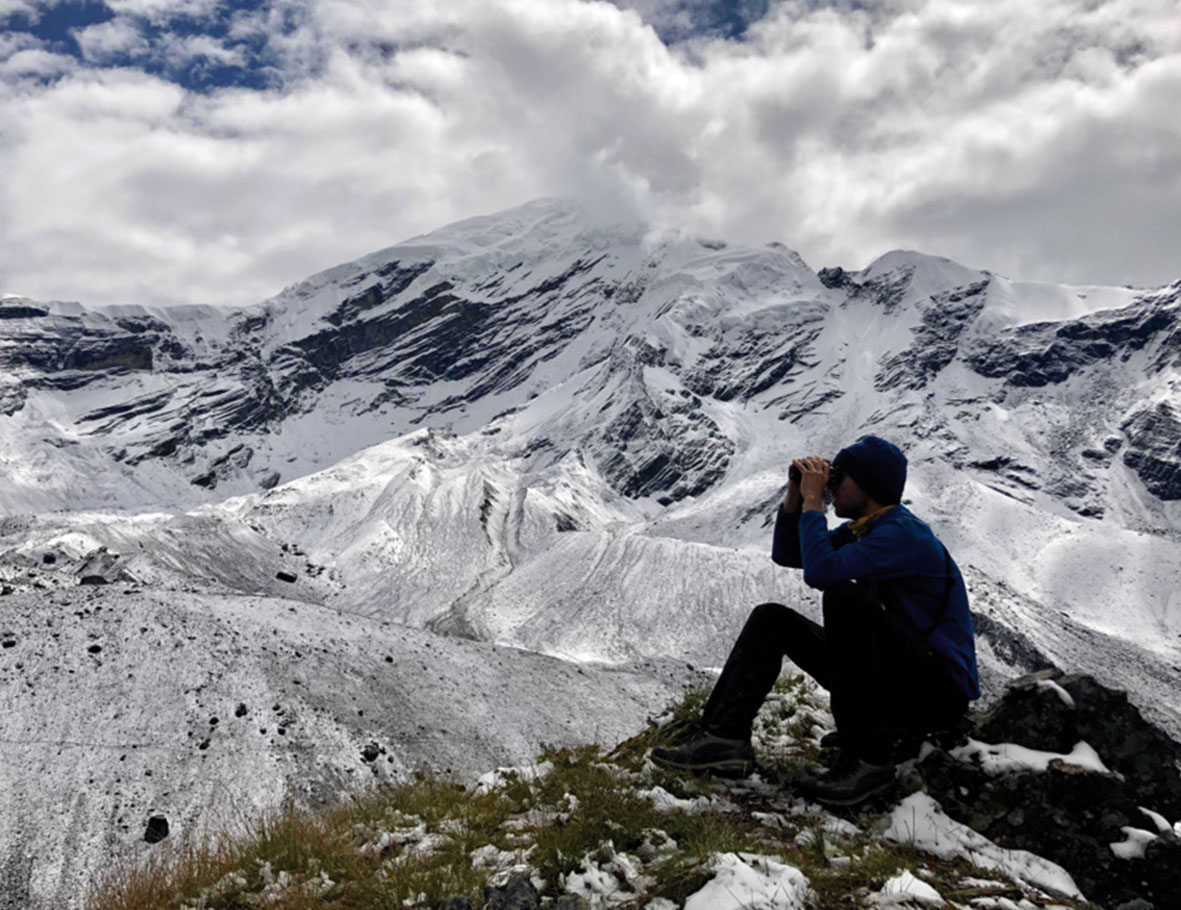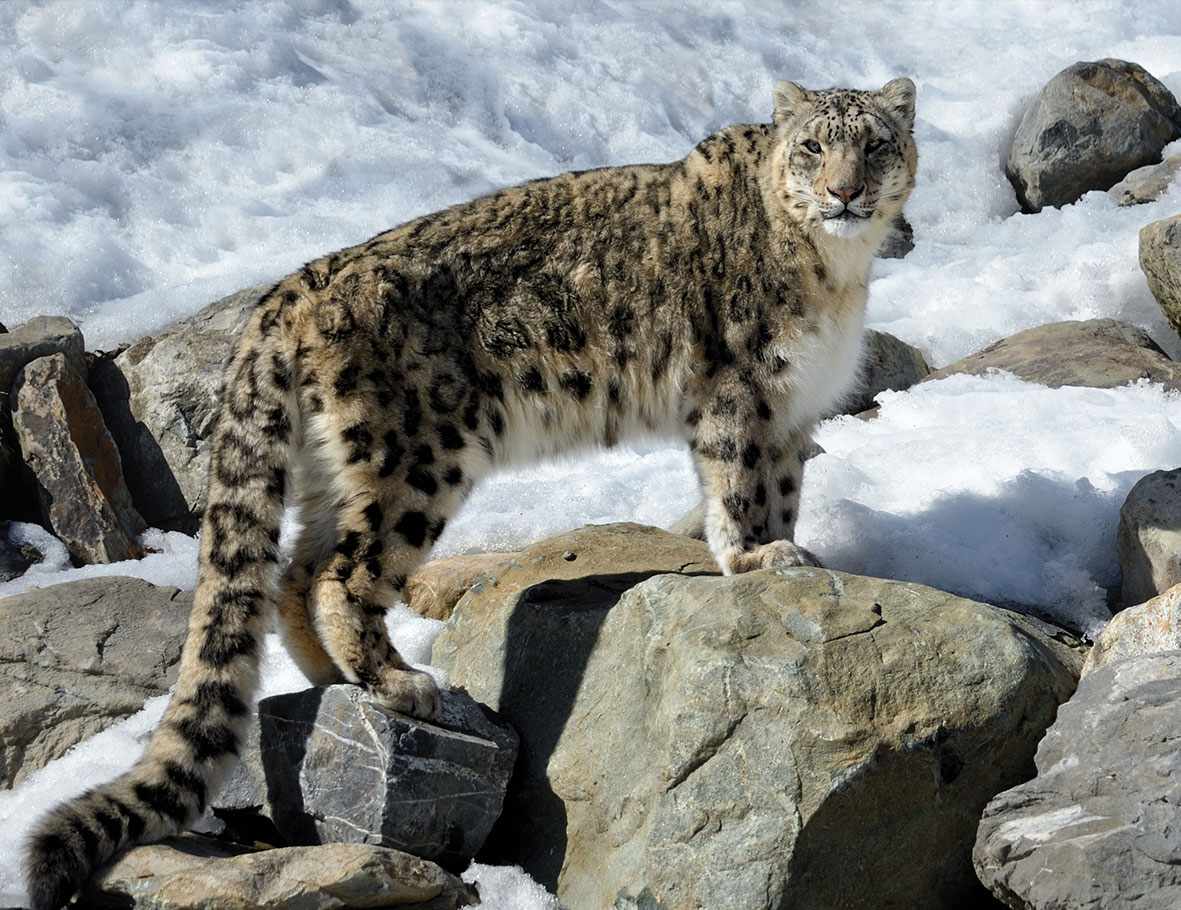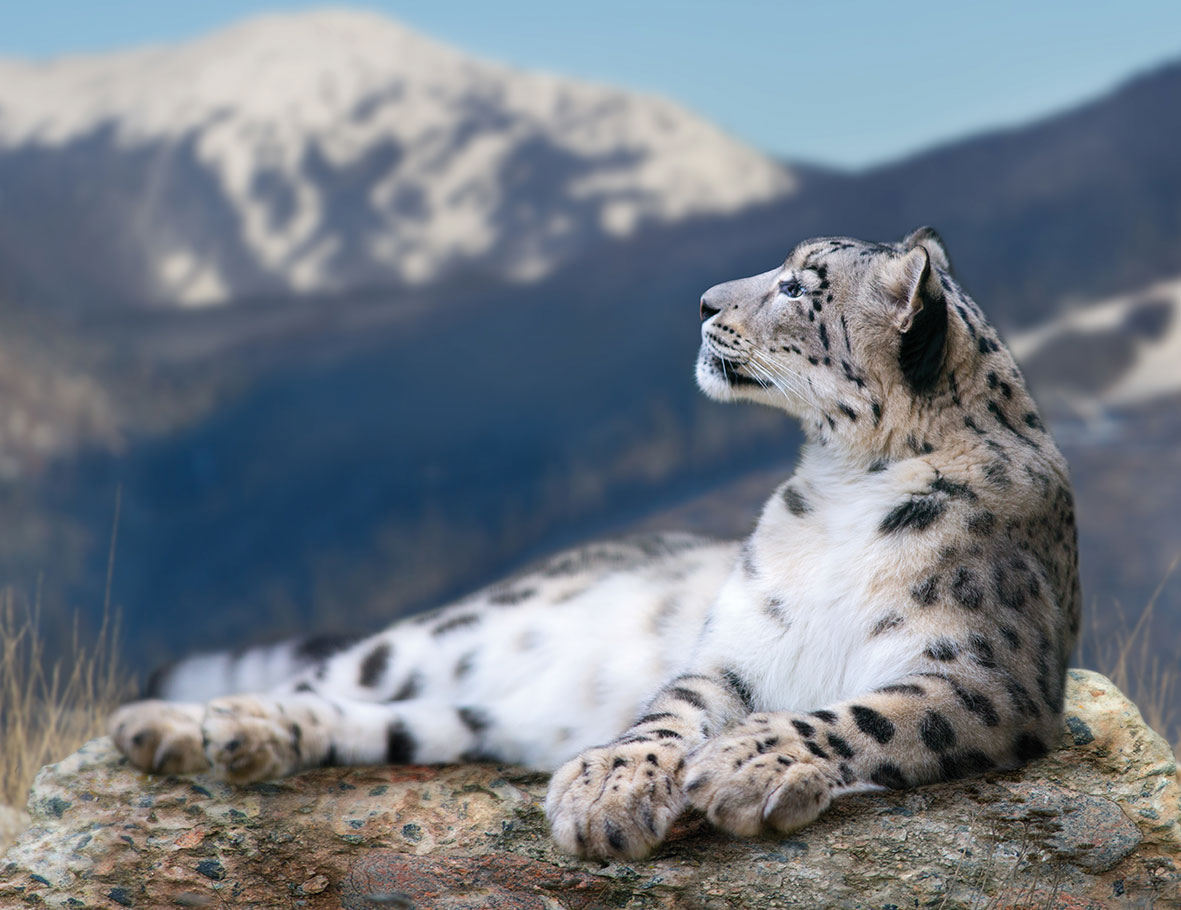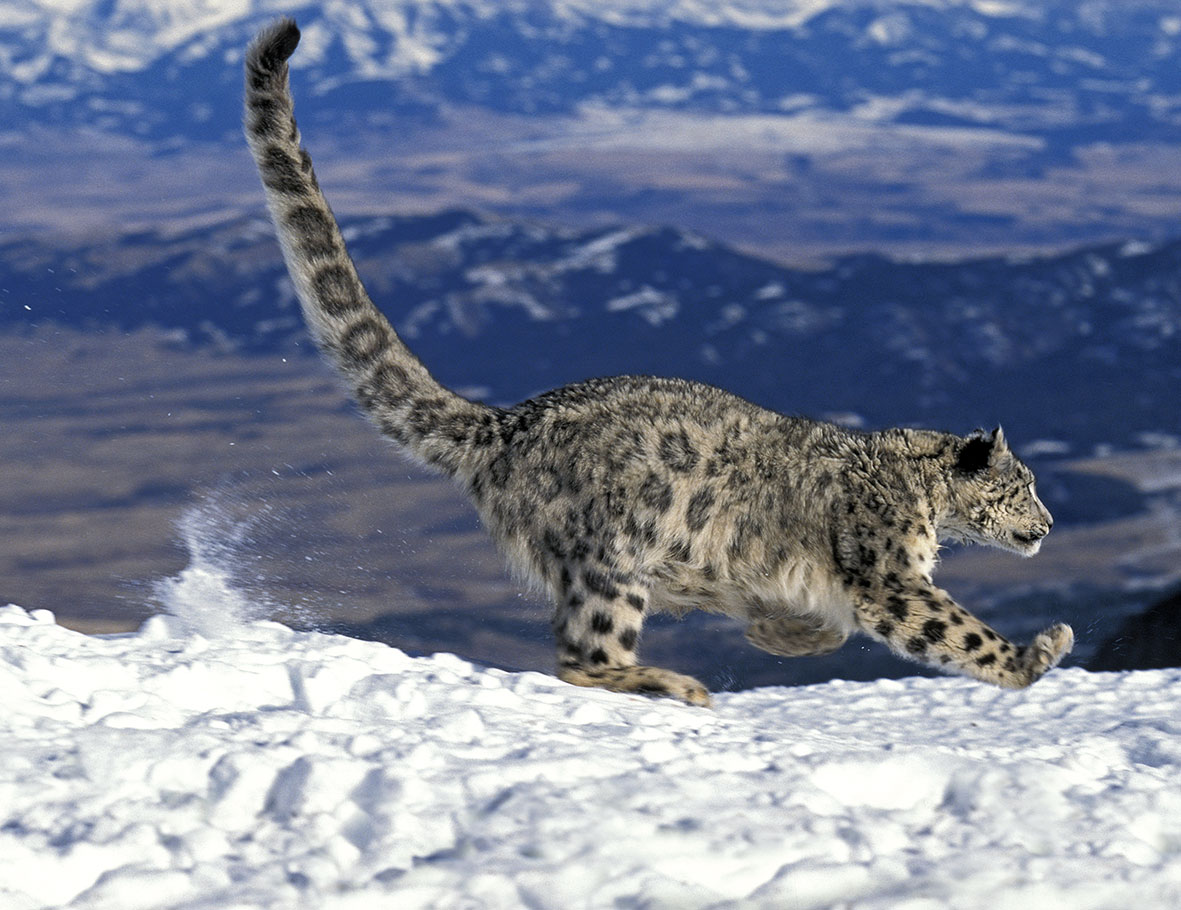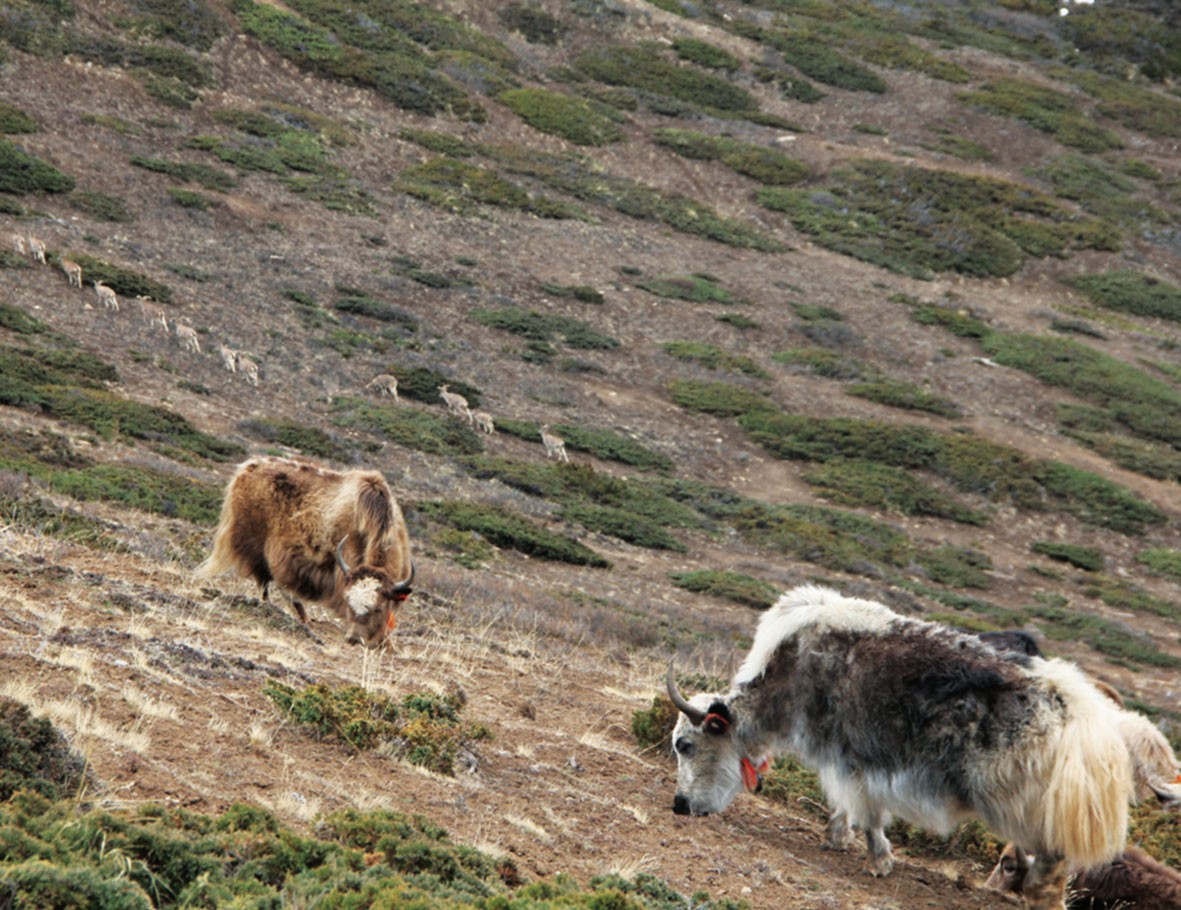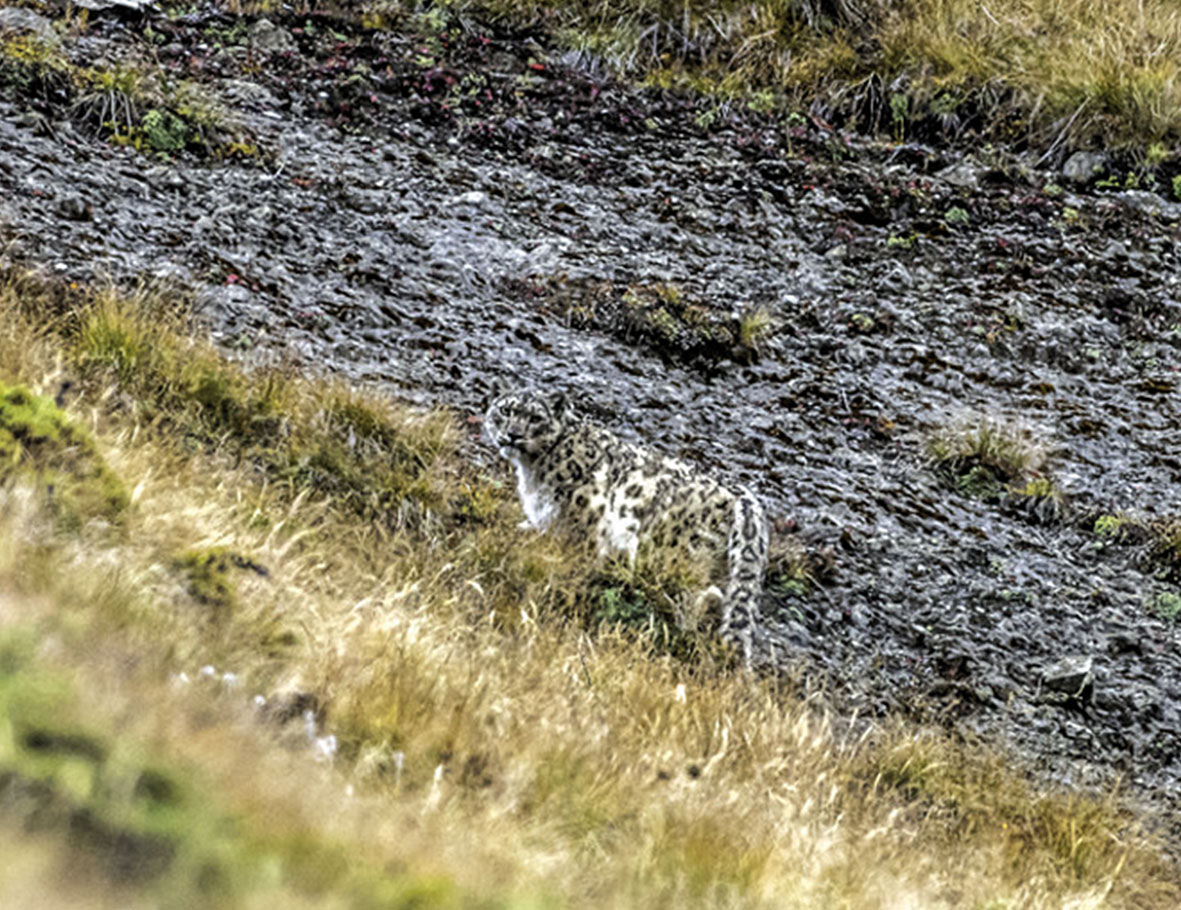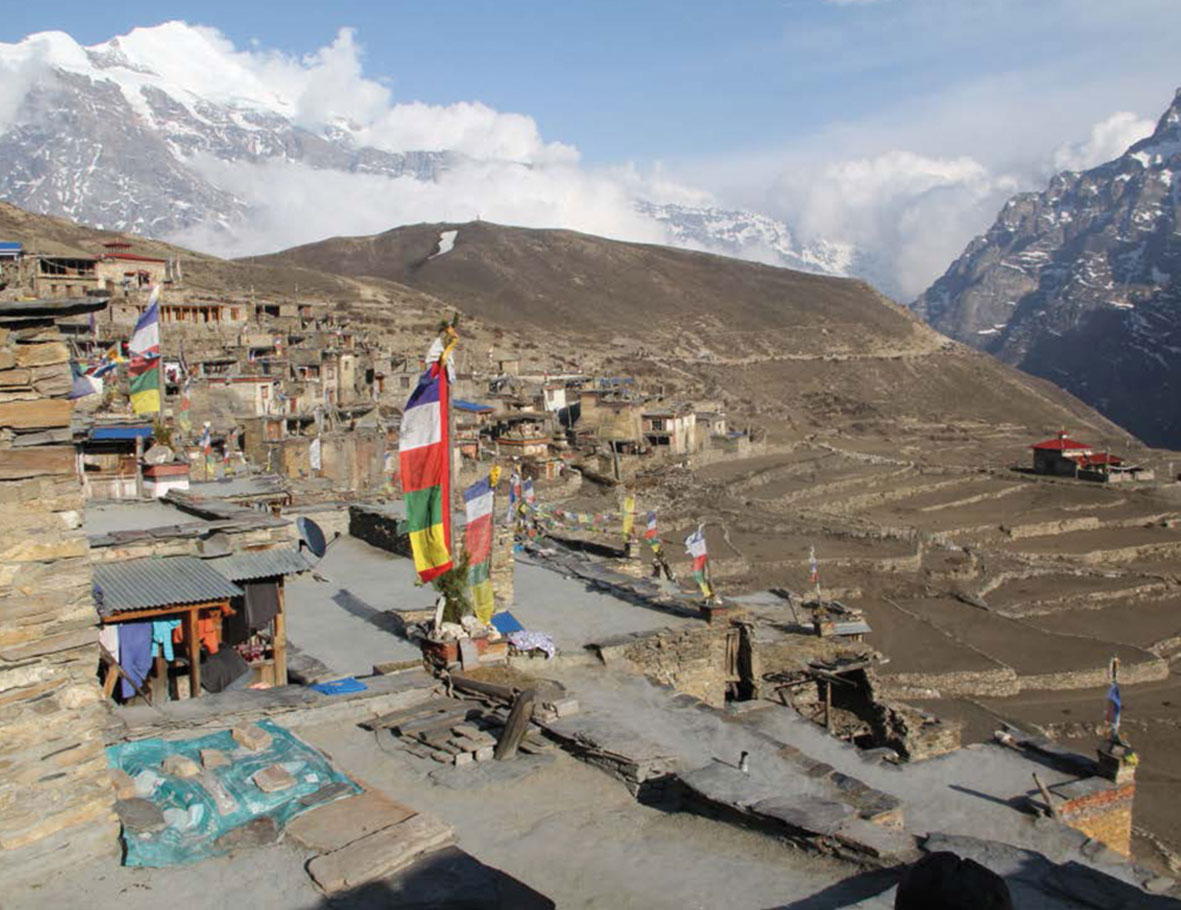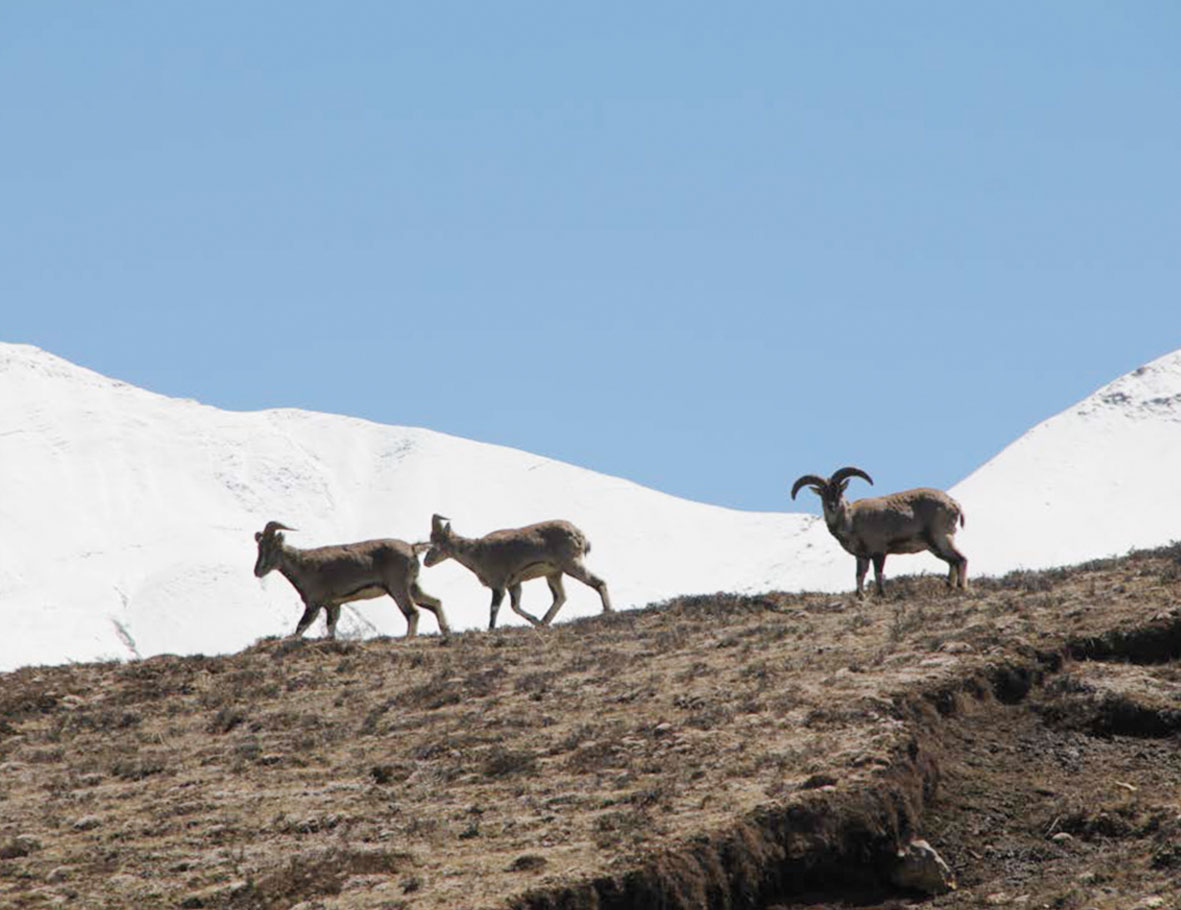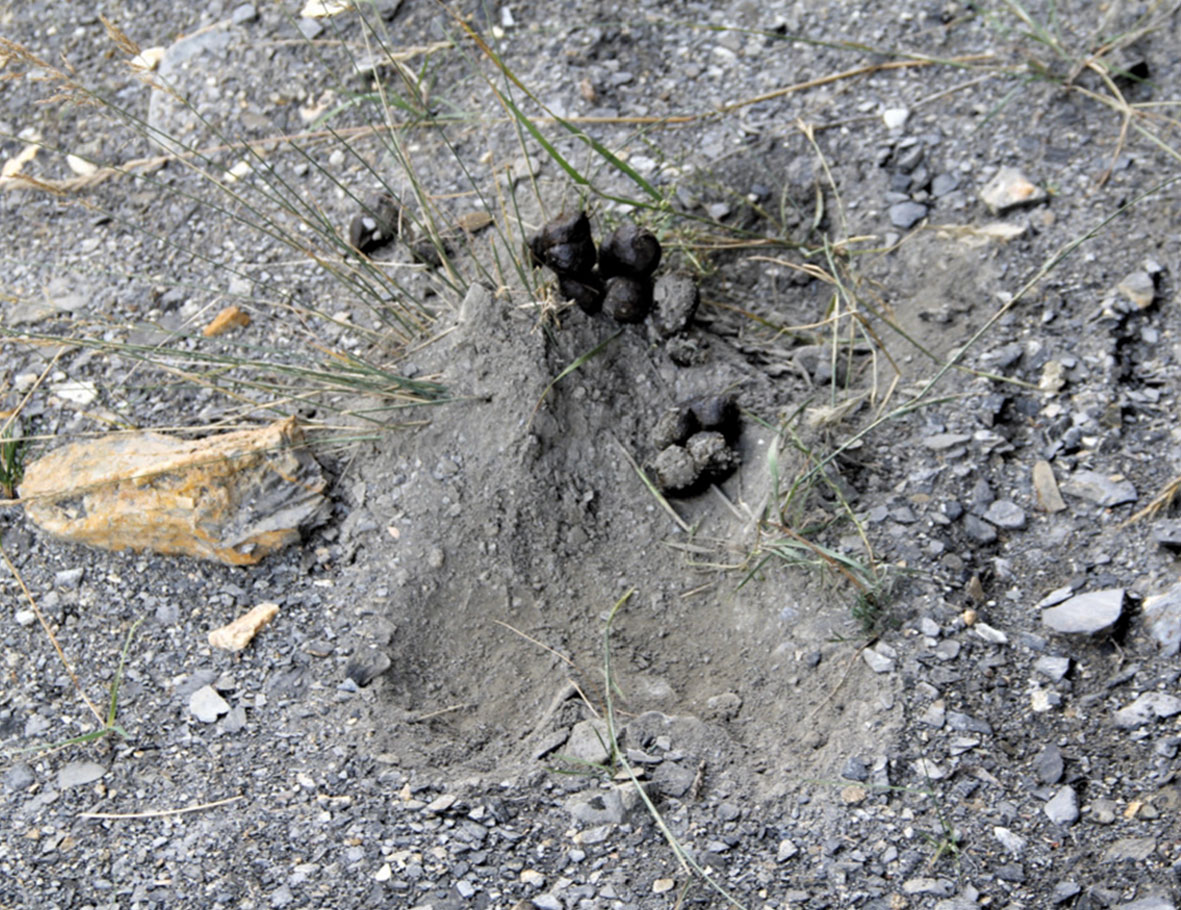Nepal
The Snow Leopard: Living with a Phantom of the Mountains
Myths and legends surround it. And no wonder: Snow leopards are extremely shy animals and seldom sighted. In the high mountains of central Asia, the big cats are at the top of the food chain and thus play a key ecological role. Nonetheless, its population is increasingly endangered.
According to the estimates of the International Union for Conservation of Nature (IUCN), there still exist around 3,000 adult snow leopards which are losing more and more of their habitat – and with it their food supply. The animals are thus turning to the easiest prey: the domestic animals of humans. For two years, the Academy has been supporting the dissertation work of Marc Filla, who is studying the conflicts between humans and animals as part of a research project of the Georg August University in Göttingen made possible through a scholarship from the Heinrich Böll Foundation. In the times of the pandemic however, the research project which cooperates with the Nepalese NGO “Third Pole Conservancy”, was difficult.
Due to the prevailing travel and mobility restrictions, all planned research stays were cancelled. Marc Filla writes: “Nevertheless, 2020 was not a “lost” year for the snow leopard project, whose goal is to identify management measures which enable a sustainable cohabitation of humans and snow leopards. Supported with the practical help of local field assistants, nearly 400 interviews with local livestock owners were conducted. These surveys took place in different regions of the Annapurna Conservation Area, a region of over 7,600 square kilometers which represents not only Nepal’s largest protected area but provides an outstanding habitat for the rare snow leopard.
The researchers are hoping that the evaluation of the interviews will provide insight about when and where the snow leopards capture domestic animals like yaks, cattle, sheep, and goats. In addition, effective protective measures should be identified to prevent attacks on domestic animals and thus minimize the conflicts with the local population.
In the meantime, the findings of an initial study which focuses on blue sheep (Pseudois nayaur) are available. In many places, the blue sheep is the snow leopard’s most important natural prey. Based on figures from 2019, the researchers assume that the population of the blue sheep in the research region compares to the level before the creation of the protective area about 30 years ago. This was gratifying because the decline in the population of natural prey is often a significant threat to the snow leopard populations. The stress on natural resources in the Annapurna Conservation Area, which has recorded a continual increase in tourism in recent decades, has probably further risen during this period.
The results of the study were published and accessible to the public in the journal https://onlinelibrary.wiley.com/doi/full/10.1002/ece3.6959).
Research work is to begin again in the spring of 2021 in the Nepalese research area and expanded to include further regions in the conservation area. The final evaluation of the data collected in the course of the project should improve the understanding of human-snow leopard conflicts and ultimately enable sustainable cohabitation with these endangered big cats.”

